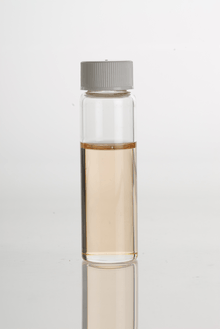Wintergreen

Wintergreen is a group of aromatic plants. The term "wintergreen" once commonly referred to plants that remain green (continue photosynthesis) throughout the winter. The term "evergreen" is now more commonly used for this characteristic.
Most species of the shrub genus Gaultheria demonstrate this characteristic and are called wintergreens in North America, the most common generally being the American wintergreen (Gaultheria procumbens). Wintergreens in the genus Gaultheria contain an aromatic compound, methyl salicylate, and are used as a mintlike flavoring.
Uses
Wintergreen berries, from Gaultheria procumbens, are used medicinally. Native Americans brewed a tea from the leaves to alleviate rheumatic symptoms, headache, fever, sore throat, and various aches and pains. These therapeutic effects likely arose because the primary metabolite of methyl salicylate is salicylic acid, a proven NSAID that is also the metabolite of acetylsalicylic acid, commonly known as aspirin. During the American Revolution, wintergreen leaves were used as a substitute for tea, which was scarce.[1]
Wintergreen is a common flavoring in American products ranging from chewing gum, mints, and candies to smokeless tobacco such as dipping tobacco (American "dip" snuff) and snus. It is a common flavoring for dental hygiene products such as mouthwash and toothpaste. It is a component of the American-origin drink root beer, leading to comments by non-Americans that this drink tastes like toothpaste.
Wintergreen oil can also be used in fine art printing applications to transfer a color photocopy image or color laser print to a high-rag-content art paper, such as a hot-press watercolor paper. The transfer method involves coating the source image with the wintergreen oil then placing it face-down on the target paper and pressing the pieces of paper together under pressure using a standard etching press.
Artificial wintergreen oil, which is pure methyl salicylate, is used in microscopy because of its high refractive index.[2]
Oil of wintergreen

The Gaultheria species share the common characteristic of producing oil of wintergreen. Wintergreen oil is a pale yellow or pinkish fluid liquid that is strongly aromatic with a sweet, woody odor (components: methyl salicylate (about 98%), a-pinene, myrcene, delta-3-carene, limonene, 3,7-guaiadiene, and delta-cadinene)[3] that gives such plants a distinctive "medicinal" smell whenever bruised. Salicylate sensitivity is a common adverse reaction to the methyl salicylate in oil of wintergreen; it can produce allergy-like symptoms or asthma.
Wintergreen essential oil is usually obtained by steam distillation of the leaves of the plant following maceration in warm water. Methyl salicylate is not present in the plant until formed by enzymatic action from a glycoside within the leaves as they are macerated in warm water.[4] Oil of wintergreen is also manufactured from some species of birch, but these deciduous trees are not called wintergreens. Spiraea plants also contain methyl salicylate in large amounts and are used similarly to wintergreen. Wintergreen has a strong "minty" odor and flavor, the Gaultheria-genus plants are not true mints, which belong to the genus Mentha.
Wintergreen oil is used topically (diluted) or aromatheraputically as a folk remedy for muscle and joint discomfort, arthritis, cellulite, obesity, edema, poor circulation, headache, heart disease, hypertension, rheumatism, tendinitis, cramps, inflammation, eczema, hair care, psoriasis, gout, ulcers, and broken or bruised bones. The liquid salicylate dissolves into tissue and also into capillaries, so overuse is as risky as overuse of aspirin. Wintergreen also is used in some perfumery applications and as a flavoring agent for toothpaste, chewing gum, soft drinks,[3] confectionery, Listerine, and mint flavorings. One application is rust removal and degreasing of machinery. Wintergreen is particularly effective for breaking through sea water corrosion.
Toxicity of wintergreen oil
Thirty ml (about 1 fl oz) of oil of wintergreen is equivalent to 55.7 g of aspirin, or about 171 adult aspirin tablets (US). This conversion illustrates the potency and potential toxicity of oil of wintergreen even in small quantities.[5]
Illiteracy may be a common factor in accidental overdoses and ingestions in adults. Treatment is identical to the other salicylates. Early use of hemodialysis in conjunction with maximal supportive measures is encouraged in any significant ingestion of methyl salicylate.[6]
Strong warning labels are recommended for household salicylate-containing compounds such as oil of wintergreen.
See also
- Gaultheria humifusa - alpine wintergreen
- Gaultheria ovatifolia - western teaberry or Oregon spicy wintergreen
- Chimaphila maculata - striped wintergreen
References
- ↑ Prescription for Herbal Healing By Phyllis A. Balch, Robert Rister
- ↑ Cecilia W. Lo, 2000. Developmental biology protocols, Volume 1, Springer in google books
- 1 2 Khilendra Gurung 2007. Analysis of wintergreen oil, Ecology Agriculture and Rural Development Society, Dolakha, Nepal
- ↑ Essential Oil Profile of Wintergreen by Ingrid Krein
- ↑ Johnson PN: Methyl salicylate/aspirin equivalence: Vet Hum Toxicol 1985; 26:317-318
- ↑ Howrie DL, Moriaty R, Breit R: Candy flavoring as a source of salicylate poisoning. Pediatrics 1985; 75:869-871
- Beck TR, Beck JB 1963. Elements of Medical Jurisprudence, ed 11. Philadelphia, JB Lippincott, 1963
- Stevenson CA 1937 Oil of wintergreen poisoning. Med Sci 193:772-788
- McGuigan MA 1987 A two-year review of salicylate deaths in Ontario. Arch Intern Med 147:510-512